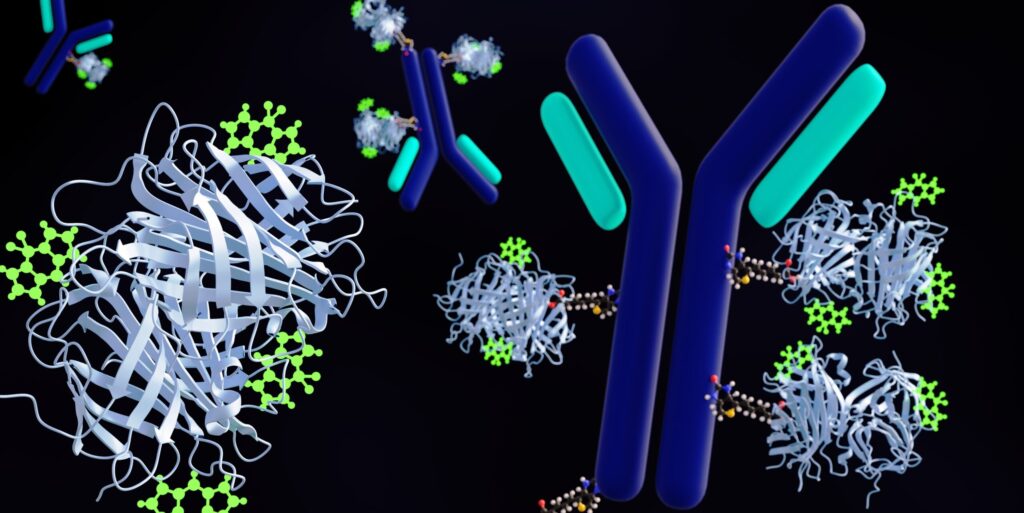
Behind the Drug: Nusinersen (Spinraza) for SMA
By Maggie Callahan | Wednesday, August 6, 2025
Spinal muscular atrophy (SMA) is a rare genetic disease that affects the peripheral nervous system and voluntary muscle movement. It’s estimated that it affects 1 in 11,000 live births in the United States. People with SMA lose motor function over time, but the rate and extent of loss depend on the type of SMA.
SMA is categorized into four types:
Type 1: The most severe type. Symptoms are apparent at birth or within the first six months of life and result in progressive muscle weakness that leads to life-threatening complications if not treated.
Types 2 and 3: Onset is in infancy or childhood, and the disease course and symptoms are less severe.
Type 4: The least severe form, with symptoms appearing in teens and adults.
SMA is an autosomal recessive condition, meaning that a person with the condition receives two copies of the mutated SMN1 gene, one from each parent.
The SMN1 gene is responsible for producing the SMN protein, which is essential for motor neuron development. Motor neurons are cells in the spinal cord that send signals that tell muscles when to contract. Without enough SMN protein, these motor neurons degenerate and die, leading to muscle weakness and atrophy. Humans have a “back-up” gene called SMN2, which produces only a small amount of functional SMN protein. People with SMA are born with the SMN2 gene, but they may have fewer copies of it. Fewer copies mean less SMN protein and more pronounced symptoms.
Before 2016, there were no SMA treatments approved by the US Food and Drug Administration (FDA). In the last decade, the FDA has approved three: nusinersen (Spinraza) in 2016, onasemnogene abeparvovac-xioi (Zolgensma) in 2019, and risdiplam (Evrysdi) in 2020.
In this article, we’ll explore the development process for Spinraza, from early research to approval.
What is Spinraza?
Spinraza is an antisense oligonucleotide (ASO), a type of molecule that binds to RNA (a gene’s instruction book) and alters how a gene’s message is processed, tailoring it to correct the production of a specific protein — in this case, SMN.
Because an ASO cannot pass through the blood-brain barrier when taken orally or intravenously (through the vein), Spinraza is administered via lumbar puncture (into the spine).
“An ASO, which is like a short strand of nucleic acid — similar to RNA or DNA — has advantages if you’re targeting nerve cells and the central nervous system because it can be injected directly into the spinal fluid and reach motor neurons,” says Adrian Krainer, PhD, a professor at Cold Spring Harbor Laboratory on Long Island in New York and a key scientist behind the development of Spinraza.
Once injected behind the blood-brain barrier, Spinraza works by targeting the SMN2 gene’s RNA and helping it produce fully functional SMN protein.
Approved in 2016 for patients of all ages with SMA, Spinraza requires only three maintenance doses per year, making it a manageable and well-tolerated treatment for patients.
“Spinraza is remarkable because it was the first disease-altering drug approved for SMA,” says Sharon Hesterlee, PhD, MDA’s Interim President and CEO. “It had this incredible impact and converted a disease that’s almost 100% fatal in its most severe form into one where you had children growing up and meeting motor milestones. Spinraza was the first treatment with the dramatic benefit we’d been looking for, which is gratifying because MDA directly funded its research.”
Developing Spinraza
1999-2003: The journey to Spinraza’s approval began when Dr. Krainer attended a workshop on SMA at a National Institute of Neurological Disorders and Stroke conference, where they discussed the subtle differences between the SMN1 and SMN2 genes.
“They’re nearly identical, but the SMN2 gene cannot make as much functional protein because of a splicing defect,” he says.
For decades, Dr. Krainer’s lab had been studying RNA and exon splicing. “It was clear that, if we could figure out why the splicing is ineffective in SMA, and we could figure out how to fix it, we might be able to help all the patients with the same drug. So I was very excited, and soon after I came back, my lab started working on SMA,” he says.
2003-2008: In 2003, Dr. Krainer and his associates published a paper on how they might fix the splicing of the SMN2 gene. That paper came to the attention of Frank Bennett at Ionis Pharmaceuticals, who was interested in the findings and initiated a collaboration.
“That collaboration made it possible for us to begin testing different ASOs in culture cells in the lab,” Dr. Krainer says. Some ASOs had no effect, some improved the splicing defect, and some made it worse. By 2007, they had identified the most promising lead molecule — which would become known as Spinraza — and published the findings in the American Journal of Human Genetics.
In 2007, MDA awarded Dr. Krainer a grant of $750,000 to support his research, enabling him and his colleagues to begin testing the drug in mouse models.
“MDA’s funding was absolutely crucial for us to begin that important step,” Dr. Krainer says.
2009-2011: After the mouse models, Ionis carried out toxicology studies in nonhuman primates to identify the maximum safe dosage and detect any safety concerns. In 2011, the FDA approved an Investigational New Drug (IND) application for Spinraza, and the first human clinical trials began.
Clinical trials
Early clinical trials were sponsored by Ionis. After Ionis partnered with Biogen, Biogen sponsored the phase 2 and 3 trials. The clinical trials included several phases and types of trials:
2011: Phase 1: An open-label (everyone received the active drug; no placebo) trial in children with SMA, assessing safety, tolerability, and pharmacokinetics (how the drug interacts with the body).
2013: Phase 2: An open-label trial assessing motor function in infants and children with SMA.
2014: Phase 3 ENDEAR: A randomized (assigned randomly to the drug or placebo), double-blind (neither researchers nor participants know which participants are taking the drug or placebo) study testing the drug in infants with SMA type 1. Results showed significant improvement in motor function and survival benefits. This study was stopped early due to the strong benefit demonstrated at the time of an interim assessment of the data.
2014: Phase 3 CHERISH: A randomized, double-blind study testing the drug in children ages 2-12 with SMA type 2. Results demonstrated significant gains in motor function, supporting the approval of the drug. This study was also stopped early due to the strong benefit demonstrated at the time of a data assessment.
2015: Phase 2 EMBRACE: A smaller phase 2 study for individuals who did not meet criteria for ENDEAR or CHERISH (due to age, symptom severity, or timing). Results were positive and supported the use of the drug across broader age ranges and symptom severity levels.
2015: Ongoing open-label studies begin: Two trials are providing additional data on Spinraza.
- NURTURE tests the drug in infants with a genetic diagnosis of SMA before they show symptoms to see if early intervention could prevent or delay disease progression. Results show that early treatment with Spinraza has allowed infants to live without ventilation and meet age‑appropriate motor milestones, such as sitting and walking, with significantly better outcomes than would be expected without treatment. “These results were dramatic and supported the case for newborn screening of SMA so that genetically diagnosed patients could initiate treatment pre-symptomatically and not get the disease manifestations,” says Dr. Krainer.
- SHINE continues to evaluate the long-term safety and sustained efficacy in people who participated in ENDEAR, CHERISH, and EMBRACE. Interim results show that Spinraza remains well-tolerated and provides durable motor function benefits, especially when started early.
Drug approval
2016: The FDA approved Spinraza for the treatment of SMA in both pediatric and adult patients with all types of SMA.
2017: The European Commission approved Spinraza. It has since been approved in more than 70 countries.
2018: SMA was added to the recommended newborn screening panel. By 2024, all 50 states had implemented newborn screening for SMA.
“The clinical trials were very impactful. The drug worked better than anybody expected,” Dr. Krainer says. “Now, Spinraza has been used to treat about 14,000 patients in more than 70 countries. SMA went from being the leading genetic killer of infants to being manageable.”
Real-world impact
Spinraza has made a real difference in the lives of many people with SMA. Thanks to early detection of SMA through newborn screening, infants with a genetic diagnosis of SMA type 1 can begin treatment before symptoms begin. Dramatic results are also seen in older children and adults, like Sory Rivera of Tyler, Texas, who lives with SMA type 3. In her 20s, Sory experienced a sudden progression in her condition, quickly losing abilities like driving and eating on her own. She began taking Spinraza in 2018, at the age of 30, and immediately experienced results.
“I noticed a significant increase in my abilities and stamina,” she says. “I wasn’t tired all the time. I had a boost of energy that I hadn’t had in a long time.”
She has since regained a lot of the strength she had before starting the treatment, being able to drive and write again.
“After Spinraza, I’ve gained a sense of peace and joy that I can continue living my life like I used to,” she says.
Dr. Krainer says results like this make his work incredibly rewarding.
“Seeing the fruits of many years of fundamental research and hard work by trainees and our collaborators and saving lives — that’s a dream come true,” he says. “We strive to do this, but realistically, we can’t expect it to happen. In this case, over a 12- to 15-year period, we went from bench to bedside with great success, and no one can ask for anything more.”
Promise for other diseases
The success of Spinraza and other ASO drugs, such as Exondys 51 for Duchenne muscular dystrophy (DMD), has generated renewed interest in the potential of ASOs.
“There’s significant activity surrounding other ASO drugs, particularly because Spinraza was the first ASO approved for a neurological condition,” Dr. Krainer says. “Its success opened the door to extensive research in neurological and neuromuscular disorders. The approach of delivering ASOs directly into the cerebrospinal fluid marked a pivotal advancement.”
Next Steps and Useful Resources
- Download MDA’s Spinal Muscular Atrophy disease fact sheet.
- Read more about the science behind SMA treatments in Behind the Drug: Risdiplam (Evrysdi) for SMA.
- Visit the Quest Media content library to find more stories about SMA and the individuals and families who live with this neuromuscular disease.
- Stay up to date on Quest content! Subscribe to Quest Magazine and Newsletter.
TAGS: Clinical Trials, Drug Approval, Drug Development, Featured Content, Newborn Screening, Research, Research Advances
TYPE: Blog Post
Disclaimer: No content on this site should ever be used as a substitute for direct medical advice from your doctor or other qualified clinician.




